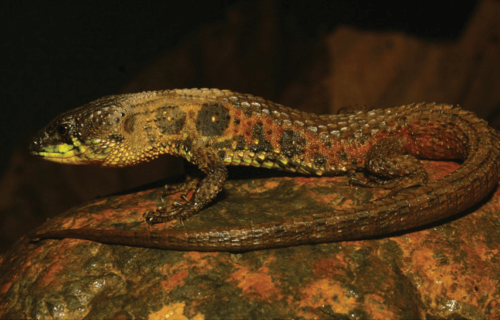BEERSHEBA, Israel — Reptiles are being wiped out faster than previously feared, warns new research. At least a fifth face imminent extinction, and the figure could be much higher, say scientists.
The finding is based on a computer model of 4,369 species omitted from the Red List of the International Union for Conservation of Nature. Reptiles at risk include turtles, crocodiles, lizards and snakes. The study suggests Earth’s sixth mass extinction is gathering pace.
“Altogether, our models predict that the state of reptile conservation is far worse than currently estimated,” says lead author Dr. Gabriel Henrique de Oliveira Caetano, of Ben-Gurion University of the Negev, in a statement. “Immediate action is necessary to avoid the disappearance of reptile biodiversity. Regions and taxa we identified as likely to be more threatened should be given increased attention in new assessments and conservation planning. Lastly, the method we present here can be easily implemented to help bridge the assessment gap on other less known taxa.”
The machine-learning tool focused on reptiles unlisted due to lack of assessment or data. It found they are most likely to be threatened.
“Importantly, the additional reptile species identified as threatened by our models are not distributed randomly across the globe or the reptilian evolutionary tree,” says co-author Shai Meiri. “Our added information highlights that there are more reptile species in peril – especially in Australia, Madagascar, and the Amazon basin – all of which have a high diversity of reptiles and should be targeted for extra conservation effort.
“Moreover, species rich groups, such as geckos and elapids – cobras, mambas, coral snakes and others – are probably more threatened than the Global Reptile Assessment currently highlights. These groups should also be the focus of more conservation attention,” Meiri adds. “Wildlife has been disappearing at an unprecedented rate in recent decades due to climate change and loss of habitat. It has been dubbed a “biological annihilation.”
What’s putting reptiles most in danger?
The IUCN’s Red List is the most comprehensive of its kind, informing conservation policy and practices globally. But the process for categorizing species is laborious and subject to bias, depending heavily on manual curation by human experts. Many animal species have therefore not been evaluated or lack sufficient data, creating gaps in protective measures.
The problem applies to 40 percent of the world’s reptiles. They are sometimes classified as “DD” (Data Deficient). Extinction risk categories were assigned to them. Scientists validated the model’s accuracy, comparing it to the Red List risk categorizations.
“Our work could be very important in helping the global efforts to prioritize the conservation of species at risk – for example using the IUCN red-list mechanism. Our world is facing a biodiversity crisis, and severe man-made changes to ecosystems and species, yet funds allocated for conservation are very limited,” says study co-author Dr. Uri Roll. “Consequently, it is key that we use these limited funds where they could provide the most benefits. Advanced tools such as those we have employed here, together with accumulating data, could greatly cut the time and cost needed to assess extinction risk, and thus pave the way for more informed conservation decision making.”
The main threats reptiles face are agriculture, logging, urban development and invasive species. In April, a study of 10,196 species found that at least 1,829 were threatened with extinction. It was the most comprehensive to date.
The latest findings suggest it was a conservative estimate. Assessments of birds, mammals and amphibians have been far more extensive.
Mass extinction history
Earth’s last mass extinction was the “Cretaceous-Tertiary.” It occurred 66 million years ago when an asteroid smashed into the Gulf of Mexico, killing off the dinosaurs and most other life.
The first was 443 million years ago, known as the “End-Ordovician.” A severe ice age led to sea level falling by 100 meters, wiping out 70 percent of ocean dwellers. Then came the “Late Devonian” event 360 million years ago when prolonged climate change killed off 70 percent of animals in shallow seas, including almost all corals.
The big one was the “Permian-Triassi” 250 million years ago. More than 95 percent of species perished. Massive volcanic eruptions in Siberia led to severe global warming. It was followed by the “Triassic-Jurassic” about 200 million years ago. Three-quarters of species were lost. A huge outburst of volcanism triggered the “age of the dinosaurs.”
The study is published in the journal PLOS Biology.
Report by South West News Service writer Mark Waghorn
